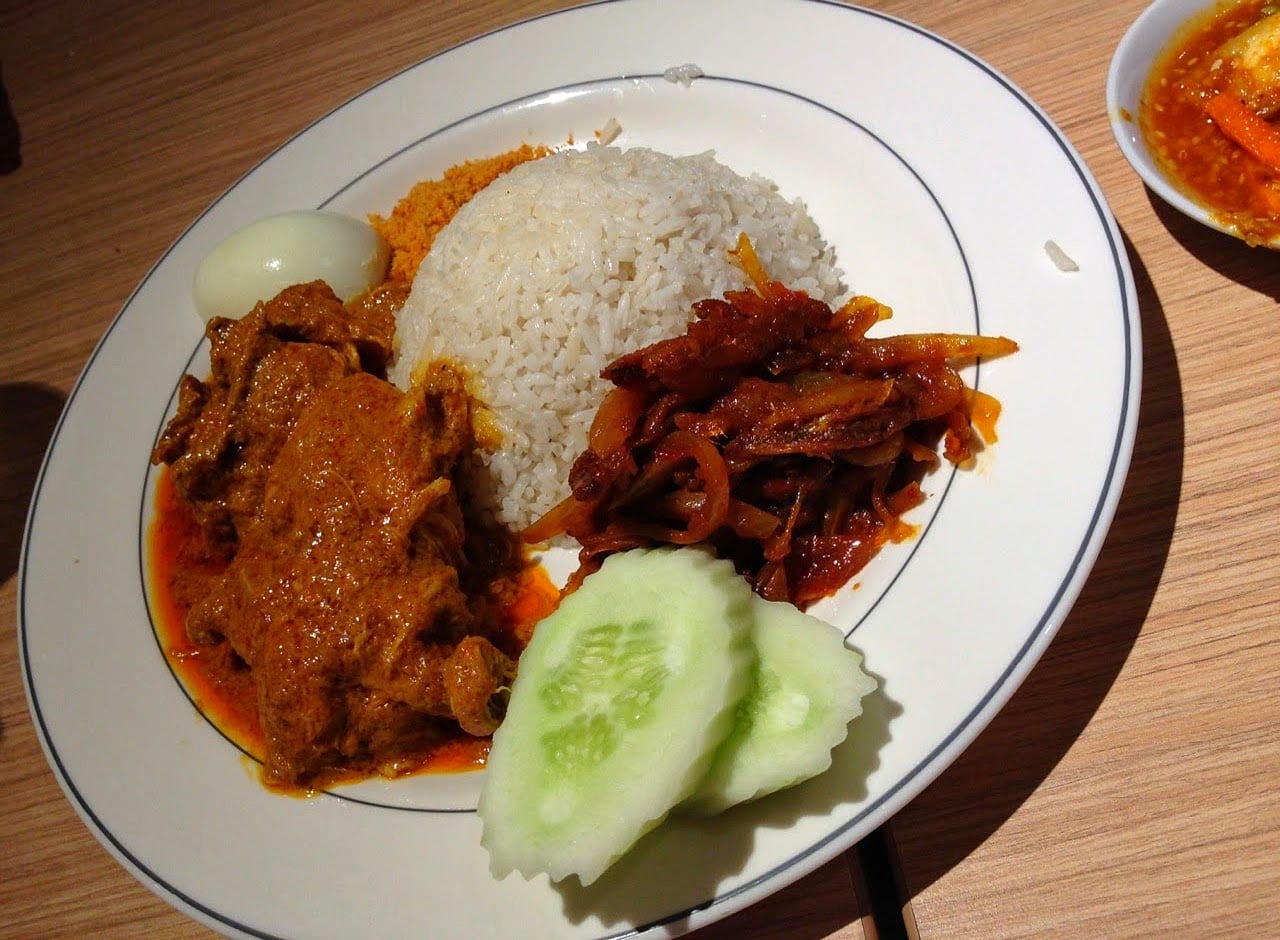
All About the Country’s Beloved Rice Dish.
Nasi Lemak is a staple in Malaysian cuisine and you can find it from food stalls to high end local restaurants. Learn the nasi lemak history, origin stories, and the variations of the dish.
Nasi Lemak History: Rich Rice for All
Nasi lemak is widely known as the national dish of Malaysia. The dish translates to “rich rice” referring to the rich creaminess of the rice made with coconut cream rather than just water.
The whole dish comprises of:
- aromatic coconut milk rice steamed and infused with fresh pandan leaves
- deep fried fish or chicken wings
- otah, or grilled fish paste
- ikan bilis, or fried local anchovies
- peanuts
- hard boiled egg
- cucumber slices
- sambal, or spicy chili paste (which is the signature condiment of the dish and in Malaysia)
Variations typically replace the main protein with curries like rendang, fried chicken, seafood, more vegetables, or a non-halal meat like pork. Because of the versatility, the dish has been embraced by all ethnic groups in Malaysia.
Origins of Nasi Lemak
Like many famous dishes, nasi lemak does not have one definitive origin story, rather it has multiple possible creations all of which originate from Malaysia itself.
The first comes from the 15th century in Malacca, just outside of Kuala Lumpur. A daughter accidentally spilled coconut milk into a pot of boiling rice. When her mother, named Mak, came home from work she asked her daughter what was that fragrant smell. The daughter responded, “Nasi le, Mak!” meaning, “Rice, mother!” Hence, the possible origin and name for nasi lemak.
Another possible history of the dish comes from farmers where they made a cheap, filling and complete dish full of carbs and the country’s seafood and coconuts. The dish gave them energy and sufficient fats to be able to work the fields all day.
While origins of the dish could trace back centuries earlier, the first written evidence of nasi lemak was seen in 1909 from a British administrator who noted that the rice made with coconut cream instead of water was served at weddings and local festivals.
After World War II, the dish further popularized as a workers meal who feasted on the hearty plate for breakfast. On their plates was the creamy rice, fried fish or fried prawns, and kangkung, or the water spinach.
In the 1970s, nasi lemak for breakfast became a thing as it was neatly all packed in banana leaves as sold as cheap as 30 cents.
For the next decades, as the dish spread and varied throughout the country, it was eaten beyond breakfast and proudly by every Malaysian.
Sign up for my newsletter on the sidebar for blog updates and my travel insider tips! And, check out my vlogs on YouTube!


